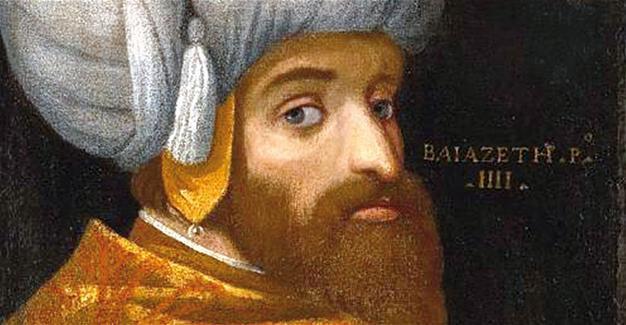Ottoman sultan portrait to be auctioned at Sotheby’s
ISTANBUL
 With a focus on artistic production under Islamic patronage, the sale of Arts of the Islamic World, which will take place on Oct. 19 at Sotheby’s London, covers more than a thousand years of artwork spanning multiple continents.
With a focus on artistic production under Islamic patronage, the sale of Arts of the Islamic World, which will take place on Oct. 19 at Sotheby’s London, covers more than a thousand years of artwork spanning multiple continents.A portrait by the school of Veronese, depicting the Ottoman Sultan Bayezid I and dated 1580, will be auctioned for 150,000 pounds.
The portrait of the sultan, the fourth ruler of the Ottoman Empire, depicted in three-quarter view looking over his shoulder and wearing a large turban and richly embroidered cloak, was directly influenced by a painting of Bayezid by Paolo Caliari, called Paolo Veronese.
According to the catalogue of the auction house, the discovery of the painting is important as it re-emphasizes the significance of Veronese’s original series of 14 portraits of Ottoman Sultans, all now in Munich, which inspired the creation of at least three, subsequent sets which were painted from the late 16th century to the 19th century.
The first-part of the sale will encompass a selection of 50 manuscripts and calligraphies from the well-known collection of the late Jafar Ghazi.
Each of the works bears witness to the high esteem in which calligraphy was held in Turkey, the Middle East and Persia from the medieval period up until the end of the Ottoman era.
A highlight of this group is a superb Timurid manuscript of Sa’adi’s Kulliyat in almost pristine condition, complete with fine, crisp illumination and tooled and filigree-work binding.
Exemplifying the high quality craftsmanship of Indian jewelers in the 19th century is a beautiful turquoise-set and enameled necklace from North India, known as “The Palmerston Necklace.”
Hailing from further West is an impressive Ilkhanid lustre mihrab tile typifying 13th and 14th century Persian architectural grandeur; whilst a silver-inlaid tray stand from Mamluk Egypt typifies the calligraphic monumentality so favored by high-ranking Mamluk patrons.
The portrait of the sultan, the fourth ruler of the Ottoman Empire, depicted in three-quarter view looking over his shoulder and wearing a large turban and richly embroidered cloak, was directly influenced by a painting of Bayezid by Paolo Caliari, called Paolo Veronese.
According to the catalogue of the auction house, the discovery of the painting is important as it re-emphasizes the significance of Veronese’s original series of 14 portraits of Ottoman Sultans, all now in Munich, which inspired the creation of at least three, subsequent sets which were painted from the late 16th century to the 19th century.
The first-part of the sale will encompass a selection of 50 manuscripts and calligraphies from the well-known collection of the late Jafar Ghazi.
Each of the works bears witness to the high esteem in which calligraphy was held in Turkey, the Middle East and Persia from the medieval period up until the end of the Ottoman era.
A highlight of this group is a superb Timurid manuscript of Sa’adi’s Kulliyat in almost pristine condition, complete with fine, crisp illumination and tooled and filigree-work binding.
Exemplifying the high quality craftsmanship of Indian jewelers in the 19th century is a beautiful turquoise-set and enameled necklace from North India, known as “The Palmerston Necklace.”
Hailing from further West is an impressive Ilkhanid lustre mihrab tile typifying 13th and 14th century Persian architectural grandeur; whilst a silver-inlaid tray stand from Mamluk Egypt typifies the calligraphic monumentality so favored by high-ranking Mamluk patrons.
















